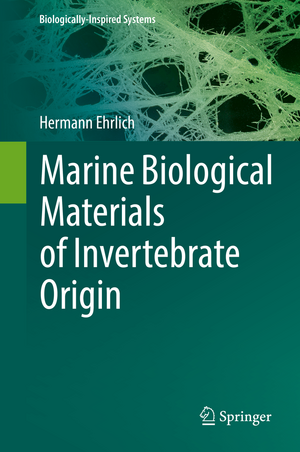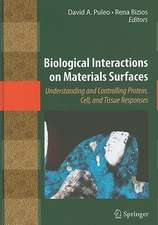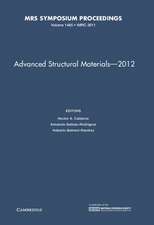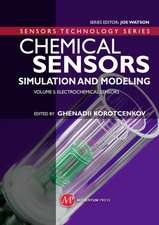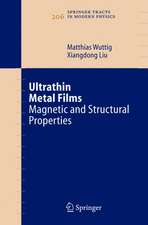Marine Biological Materials of Invertebrate Origin: Biologically-Inspired Systems, cartea 13
Autor Hermann Ehrlichen Limba Engleză Hardback – 30 oct 2019
Preț: 1046.72 lei
Preț vechi: 1377.26 lei
-24% Nou
Puncte Express: 1570
Preț estimativ în valută:
200.28€ • 209.68$ • 165.73£
200.28€ • 209.68$ • 165.73£
Carte tipărită la comandă
Livrare economică 02-08 aprilie
Preluare comenzi: 021 569.72.76
Specificații
ISBN-13: 9783319924823
ISBN-10: 3319924826
Pagini: 611
Ilustrații: XIII, 329 p. 138 illus., 66 illus. in color.
Dimensiuni: 155 x 235 mm
Greutate: 0.59 kg
Ediția:1st ed. 2019
Editura: Springer International Publishing
Colecția Springer
Seria Biologically-Inspired Systems
Locul publicării:Cham, Switzerland
ISBN-10: 3319924826
Pagini: 611
Ilustrații: XIII, 329 p. 138 illus., 66 illus. in color.
Dimensiuni: 155 x 235 mm
Greutate: 0.59 kg
Ediția:1st ed. 2019
Editura: Springer International Publishing
Colecția Springer
Seria Biologically-Inspired Systems
Locul publicării:Cham, Switzerland
Cuprins
Chapter1. Introduction.- Part 1: Biomaterials. Chapter2. Biomaterials and Biological Materials, Common Definitions, History, and Classification.- Part 2. Biominerals and Biomineralization. Chapter3. Biominerals.- Chapter4. Biomineralization.- Chapter5. Biomineralization-Demineralization-Remineralization Phenomena in Nature.- Chapter6. Multiphase Biomineralization.- Part 3. Biomineralized Structures and Biocomposites. Chapter7. Hierarchical Biological Materials.- Chapter8. Paleodyction Honeycomb Structure.- Chapter9. Pecularities of the Structural Organization of the Glass Sponges (Hexactinellida) Skeletons.- Chapter10. Phenomenon of Interspace Mineralization in the Bilayered Organic Matrix of Deep-Sea Bamboo Coral (Anthozoa: Gorgonacea: Isididae).- Chapter11. Bamboo Corals as Living Bone Implants.- Chapter12. Sand Dollar Spines.- Chapter12. Sand Dollar Spines.- Chapter13. Molluscs Spicules.- Part4. Non-mineralized Structures. Chapter14. Spongin.- Chapter15. Gorgonin.- Chapter16. Antipathin.- Chapte17. Rubber-like Bioelastomers of Marine Origin.- Chapter 18. Capsular Bioelastomers of Whelks.- Chapter19. Byssus: from Inspiration to Development of Novel Biomaterials.- Chapter20. Abductin.- Chapter21. Resilin.- Chapter22. Adhesion Systems in Echinodermata.- chapter23. Adhesive Gels from Marine Gastropods (Mollusca).- Chapter24. Barnacles cements.- Part 5.Suction-based Adhesion in Marine Invertebrates. Chapter25. Suctorian Protozoa.- Chapter26. Trichodina sucker disc.- chapter27. Giardia Suction.- Chapter28. Suction in Mollusks.- Chapter29. Halogenated Biocomposites.- Chapter30. Chitin-protein-based Composites.- Part 6. Macromolecular Biopolymers. Chapter31. Chitin.- Chapter32. Marine Collagens.- Part 7. Self Made Biological Materials. Chapter33. Self-made Biological Materials of Protozoans.- Chapter34. Foraminifera.- chapter35. Polychaete Worms: from Tube Builders to Glueomics.- Part 8. Extreme Biomimetics. Chapter36. Life in extreme Environments: from Bacteria to Diatoms.- Chapter37. Epiloque.
Notă biografică
Hermann Ehrlich received his Ph.D. degree in 1984. He served as a postdoctoral researcher at Max-Bergmann Centre of Biomaterials and Institute of Materials Science in Dresden, and after that at Habilitation in Biomaterials at Christian-Albrecht’s University in Kiel. Prof. Ehrlich currently holds a Group Leader position at the Institute of Electronics and Sensor Materials, TU Bergakademie in Freiberg. His research is focused on marine biomaterials, biomineralogy, extreme biomimetics and technical biomateriology. Using biochemical, cellular, molecular, and analytical approaches, he and his co-workers, for the first time, discovered and characterized chitin and novel hydroxylated collagen in the skeletal formations of diverse marine sponges.
Caracteristici
In this book marine biology and biotechnology meet materials science for the first time This book is simultaneously oriented with respect to four scientific communities: biologists, chemists, materials scientists and engineers Numerous scientific findings and hypothesis are discussed in this book for the first time from historical point of view starting by events published in the XVIth century Dozens of previously unpublished images of unique marine creatures and structures from nano- to microscale including high-resolution scanning and transmission electron micrographs are represented
